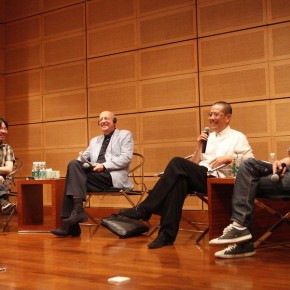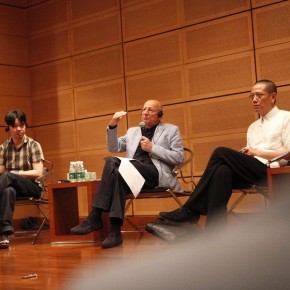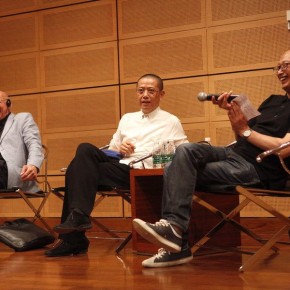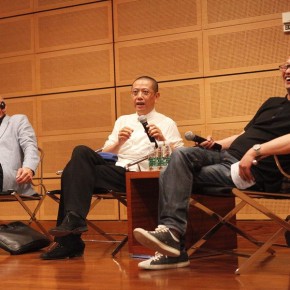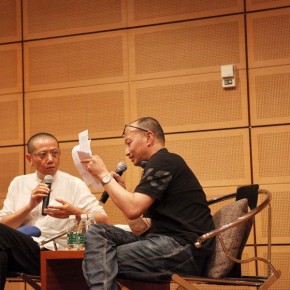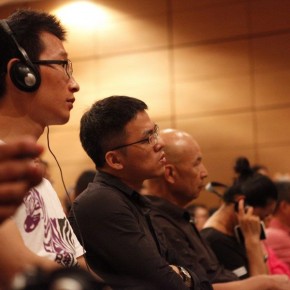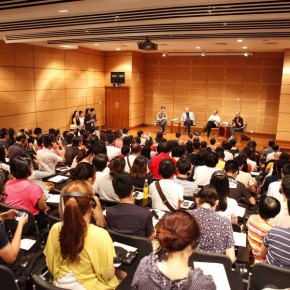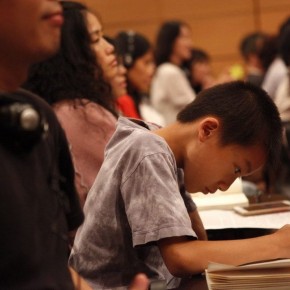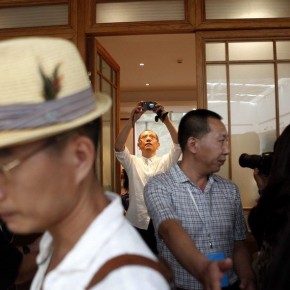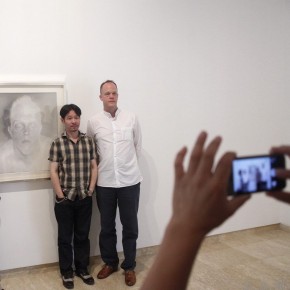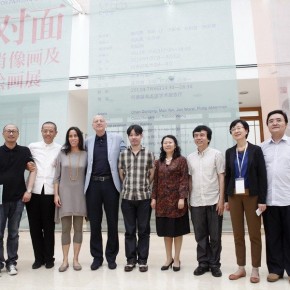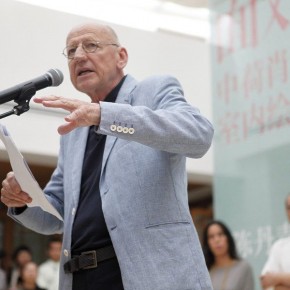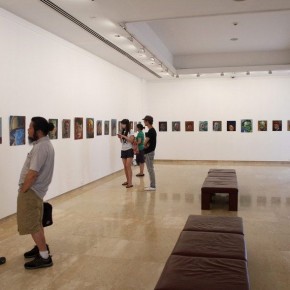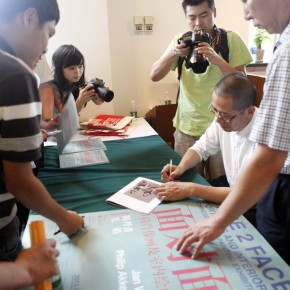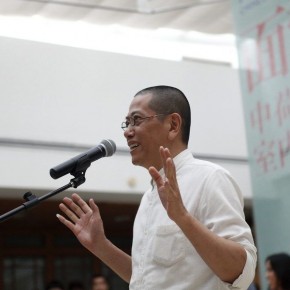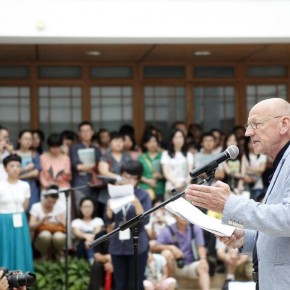
On July 6, 2013, to coincide with “Face 2 Face Portraits and Interiors: Chinese-Dutch Painting Exhibition”, “Dialogue: Art and Imitation” was held at the He Xiangning Art Museum, artists Chen Danqing, Mao Yan, Dutch curator Cees Hendrikse and Feng Boyi, Art Director of the He Xiangning Art Museum were invited to talk at the lecture. The size of the audience was too large for the lecture hall so the museum specially arranged a venue for visitors to watch it live.
A rapid economic growth that is similar to the expansion of the West commonly blocking the formation of Chinese self-identity, as well as forcing a series of contemporary art images confusing the spectators. In such a context, the lecture offered a discussion and analysis on the essence of the difference from knowing art in the West and China for a long time, through the works featuring in this exhibition. With a dialogue, the lecture was presided over by Feng Boyi, who asked questions, while guests answered it respectively.
Beyond by the use of reproduction
Talking about the theme “reproduction”, curator Cees Hendrikse said it was unnecessary for an artist to reproduce a master piece, because innovation was the only means to master this. After observation of the surroundings, a good artist should express things as starting from his/her heart, instead of the outside world, while it was also possible to create his/her personal works through “reproduction”. Taking artist Jan Worst as an example, reproducing the models printed in the magazines, combined with classic interior scenes, a new feeling was created by the juxtaposition of two reproductions; about the self-portrait series Philip Akkerman insisted, he believed that the reproduction of the artist was not only the understanding of himself, but also to constantly update and repeatedly think about his knowledge of the creation.
Production itself is a language
Chen Danqing talked about copying, starting with his story. In 1975, he was introduced to Yaming by a friend, at the age of 21, showing his works to the old painter, who evaluated them as copies, failing to pay attention to the air of the object. It was impressive that an old Chinese painter regarded his sketches in oil as a copies. He was too young to justify it at that time, feeling wronged. After thirty years, he was confident and able to admit that he copied. Went to the USA, he opened up his vision and found that sketches, copies, creations, and reproductions composed of an interrelated paradox. Abundant of prints and copies that were seen in the 1950s and 1960s, while our lives were filled with reproduction today, the former was reproduced by machine, while the latter were handmade. The paintings themed on books were actually too theoretically to discuss the reproduction and representation, and he frankly admitted that he was confused by paradox or misunderstanding, which he began to be interested in now. He called the works presented at the show as works for exercise, full of practical ideas and content while appearing quiet, so that few people knew that he was still painting. Talking about the subjects of his “sketch” – the youth, he claimed youth was sexy but innocent, for they hardly knew how sexy they were.
Painting itself is important
Feng Boyi continued the topic of copy and recreation on Mao Yan, who had created the series of Thomas for years, considered to be erotic, sexy, and ambiguous by many people. The artist believed that a good painting should be sexy, like people. Mao Yan said, he inadvertently did a silly thing, but he liked the casual and natural feel. He also found that the lack of their ability formed a so-called individuality, but the painting itself was crucial. After decades of study, he began to have a basic understanding of painting, but it was the moment to start the pursuit of his painting dream.
Alternation of generations of the successful concept
When talking about the future of painting, Chen Danqing frankly said there were few possibilities for painting, and it was certain that the most glorious era of painting had gone, but it didn’t disappear. Today, there are a lot of artistic marginalization discussions, which were too slight for discussion, so that you would be marginalized once you talked about them. He also criticized the dislocation of the artistic educational system, he believed that it was ridiculous to cultivate contemporary artists according to the standard of the 1950s, but it was a reality that none could change it. He said he was afraid to be an object being copied, conveying a wrong message in a correct way. The time for painting had past, the late Freud might be the last master. He and Cees Hendrikse had talked about a phenomenon: Chinese artists were often prematurely called masters, while they believed that they were masters. The generation of Renoir and Monet, who initially brought art from the themes of religion and palace to personal feelings, were the true masters, but they avoided being called “masters”, and admitted the failure to grasp the changing colors, compared to which, that Chinese artists fought to be “masters” was a phenomenon showing a sick successful concept. Finally, in Q & A section, the audiences were eager to question speakers, particularly Chen Danqing. After the lecture, an opening ceremony was held in the lobby of the He Xiangning Art Museum, also attracting a large number of participants.
“Face 2 Face Portraits and Interiors: Chinese-Dutch Painting Exhibition” opened on July 6, carrying on through to September 8. The Lecture video is about to screen at the exhibition hall.
?Journalist: Chen Chuqing/ CAFA ART INFO
Translated by Chen Peihua and edited by Sue/CAFA ART INFO
Photo courtesy: He Xiangning Art Museum


